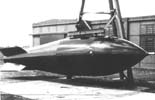
500x323, 20 K
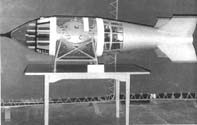
640x406, 35 K
Cutaway Display



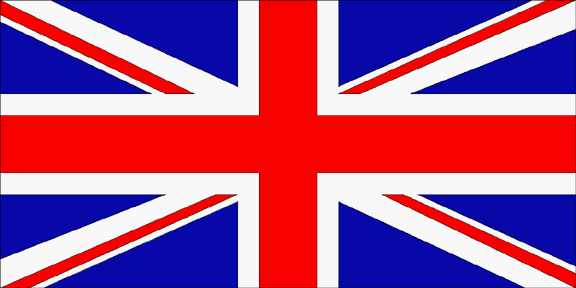



Last changed 30 April 2002
Blue Danube (Mark 1)
 500x323, 20 K |
 640x406, 35 K |
| Blue Danube | Blue Danube Cutaway Display |
It was continuously modified, so it existed in a number of "variants", some with yields up to at least 40 kt. It was tested in Buffalo Round 2 (4 October 1956) and 3 (11 October 1956) with low yield cores providing yields of 1.5 and 3 kt. Only about 20 were manufactured by early 1958 when production terminated. It remained in service until 1962.
Red Beard
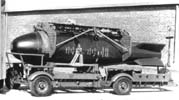 500x280, 28 K |
| Red Beard |
It was tested in Buffalo Rounds 1 (27 September 1956) and 4 (22 October 1956) with yields of 15 and 10 kt respectively. A variable yield of 5-20 kt has been claimed for this weapon. This device was adapted as the primary for the first British thermonuclear weapons, tested in 1957. Red Beard was in service from 1961 to 1971. A maximum of 80 bombs was in RAF inventory, and about 30 in the Fleet Air Arm stockpile, during the early 1960s.
Violet Club
This interim air dropped bomb had an estimated yield of 500 kt. The case was very similar to the Mark 1, its weight was 9000 lb. Deployed in early 1958, only five were planned for deployment. The deployed bombs were subsequently converted to Yellow Sun Mk 1 bombs.
The device used in Violet Club was called Green Grass. This device had not been previously tested, and was based on a design prepared for Grapple (but also apparently not tested), although its yield was predicted from devices that were tested in Grapple. Based on this, and the similarity in names, it may be surmised that Green Grass is based on Green Bamboo (bamboo is a type of grass after all). The probable alteration was to reduce the fissile content (to perhaps 75 kg or so) thus making better use of Britain's scant U-235 stockpile. The severe safety problems of this design clearly indicate a high fissile content. The intent would have been to provide a high yield weapon that could be quickly deployed in reasonable numbers (impossible for Orange Herald).
Yellow Sun Mk 1
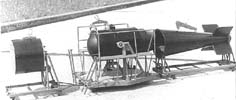 640x271, 30 K |
| Yellow Sun Mk 1 |
Yellow Sun Mk 2/Red Snow
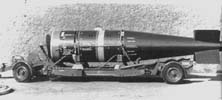 640x288, 29 K |
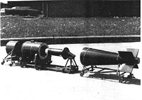 400x282, 30 K |
| Yellow Sun Mk 2 | Yellow Sun Mk 2 disassembled |
Blue Steel
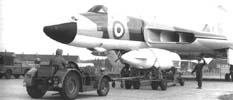 640x274, 23 K |
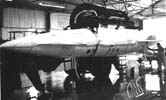 500x302, 28 K |
| Blue Steel | Blue Steel close-up. |
The Blue Steel was 10.7 m long, had a wing span of 4.0 m, and weighed 6800 kg. It traveled at up to Mach 2.5, with a maximum range of approximately 200 km. The missile used in inertial navigation system that provided an accuracy of 100-700 yards (CEP).
WE 177
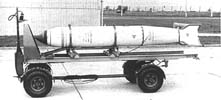 640x289, 32 K |
| WE 177 bomb |
The WE 177A weighed 272 kg (600 lb) and had a maximum yield of 200 kt, the WE 177B weighed 431 kg (950 lb) and had a maximum yield of 400 kt. Both weapons were variable yield designs. Although they were both one-point safe, they lacked insensitive high explosive or fire-resistant pits. Both variant were parachute retarded for low level delivery and could be used in laydown mode (time delayed detonation on the ground).
Quantity production of the WE 177 was delayed until the 1970s due to the production demands of the Polaris warhead which ended in 1969. Deployment was completed by the late 70s. The WE 177 was retired from service in March 1998, and dismantling was completed by the end of August 1998.
Polaris Warhead
There is some confusion about whether there were really two Polaris warheads (that is, "physics packages") or only one. The initial deployment of the three warhead A3T Polaris SLBM was accompanied by the production and deployment of a British-produced warhead, apparently a version of the American W-58 200 kt warhead deployed on the U.S. Polaris A3. Later an update of the Polaris missile force, known as the Chevaline program, was carried out with the modified missiles being re-designated the A3TK. This update included a new bus (upper stage), new RVs, and a sophisticated penetration aid (decoy) package. It is not completely clear whether the existing Polaris warheads were simply repackaged, or whether a completely new model was introduced. Due to Britain's limited weapons development and production capacity it seems likely that the warheads used to equip Chevaline, were based on the preexisting Polaris warheads.
Immediately after the 10 June 1963 decision by the British Admiralty to acquire the next-generation A3T Polaris SLBM (in preference to the A2 version then deployed by the U.S., Aldermaston began full-scale developmental work on the Polaris warhead. The design is said to be completed in the spring of 1966, with production beginning in 1966 or 1967. The "developmental" and "design" work associated with this warhead presumably involved adapting the already proof-tested American W-58 warhead to manufacture in a British plant. The warheads were deployed in Mk-2 RVs purchased from the U.S.
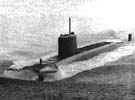 352x261, 20 K |
| HMS Resolution |
Two mid-life update programs were instituted for the Polaris missile.
The first and best known was the Chevaline (aka "Super Antelope" and "KH793") program. It began in secret (as is true of all British nuclear programs) in the late sixties when the Soviet Union began deploying an ABM system around Moscow. Although this system eventually turned out to be very limited in scope, concern about the continuing potency of the British deterrent developed and proposals were made to develop a countermeasure system to improve the ability for Polaris to penetrate these defenses. The program was not an original British undertaking, but was based on a classified U.S. program called Antelope which had made available to the UK in 1967. In June 1967, the Labour Government announced in Parliament its decision not to upgrade the Polaris system by purchasing Poseidon missiles from the United States. Instead of deploying Poseidon, it was decided to re-direct work at Aldermaston to investigate the possibilities of designing a new warhead capable of penetrating Soviet defences using decoys, hardening techniques and penetration aids. Studies of the concept were made in 1967 and the decision to proceed was made by the first Wilson government that same year. By 1969 the Chevaline concept was defined and by 1972 the system had been worked out in detail. It was approved for deployment by the Heath government (1970-74), a decision finally ratified by the second Wilson government in February 1974. At the time of the Wilson decision to proceed the cost was estimated at £250 million. By 1975 this cost had increased to £400 million, and a review was held to determine whether the program should be cancelled in September. This was an important moment in British nuclear policy making because the key issue on review was more than just Chevaline - it was whether the British could afford to maintain its deterrent and competitive in the arena of nuclear arms.
The existence of Chevaline was first disclosed on 24 January 1980 during a debate in Parliament by Conservative Defence Secretary Francis Pym. The total cost of the project was given as £1,000 million making Chevaline the most expensive defence project not to be made public. The high cost resulted in a highly critical report by the Public Accounts Committee published in 1982.
 260x480, 7 K |
| Chevaline |
The first Chevaline warhead was tested 23 May 1974 (possibly designated the TK-100). Sea trials of Chevaline were conducted in November 1980. Production of the Chevaline warhead ran from 1979-1982 with 100 warheads being produced. Chevaline went on patrol for the first time in mid-1982 aboard HMS Renown, with deployment completed in 1987. The estimated yield of the Chevaline is 225 kt.
In 1999 the decommissioning of the Chevaline system (presumably meaning warhead disasembly) was expected to be completed at the AWE during 2000.
The second update program for Polaris involved remanufacture of the solid fuel motors. This program began in 1981, and led to the installation of new motors in all missiles during 1986-87.
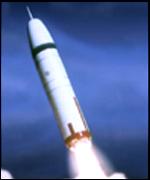 |
| Trident Missile |
After the completion of production for Chevaline, a total of nine nuclear tests were conducted by the UK at the Nevada Test Site in the U.S. Most or all of these were no doubt connected with the development of the Trident warhead. The first of these, Phalanx Armada (22 April 1983) had a yield of < 20 kt and was probably a test of the warhead primary, the next seven had yields between 20 and 150 kt and could have been tests involving the thermonuclear secondary. The last two of these high yield tests - Aqueduct Barnwell (8 Dec. 1989) and Sculpin Houston (14 Nov. 1990) were almost certainly full yield Trident tests, with seismic magnitudes of 5.7. The last nuclear test conducted by Britain was the Julin Bristol shot held on 26 November 1991. This test, with a yield of <20 kt, may also have been a final proof test of aspects of the Trident warhead such as one of the low yield options.
The first batch of British Trident warheads were completed in September 1992. They were designed by the Atomic Weapons Establishment (AWE) at Aldermaston, and are assembled at Aldermaston and Burghfield. The warheads are though to have similar characteristics to the U.S. W-76 now on U.S. Trident I and II missiles. Production of this warhead continued into 1999 which was probably its last year of production.
According to the AWE the Government's Chief Scientist has "recommended that the Trident design should be reviewed every seven years, to ensure it had not 'drifted' from its original intent."
The British Trident warheads are capable of selective yield, ranging from under a kiloton up to the full yield of 100 kt or so (this differs from U.S. SLBM warheads). Yields are probably 0.3 kt, 5-10 kt and 100 kt.





